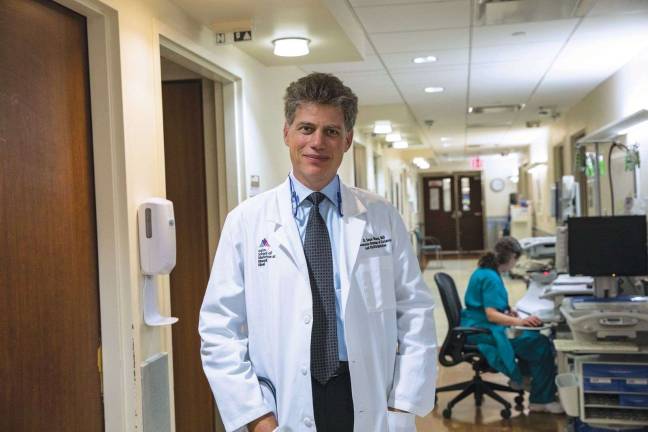making patients comfortable

You could hardly call it a trend, but palliative care is a rapidly growing field in the medical world today. While many confuse it with hospice, it is not the same thing. Just spend a few hours at the Wiener Family Palliative Care Unit, on the sixth floor of the Klingenstein Pavilion at Mount Sinai, and you will not feel despair, but rather gratitude and hope.
Considered by many the national model, the unit is not about the end of life, most associated with hospice. On any given day, you will encounter (and want to hug) some 30 dedicated staffers, including nurses, social workers, counselors, volunteers, the occasional spiritual adviser, always a doctor or two. They will be tending to the patients and their families in the 14 private rooms, or in one of the welcoming larger spaces. The average stay for patients is five days, and those are filled with receiving resources available to lessen pain, regroup, regain some control, and make a plan for yes, the future.
“Palliative is about symptom management,” explains Amy Newman, Nurse Manager of the inpatient unit, “and for offering emotional support to his or her loved ones. Basically, we are discussing what needs to be done in whatever time is remaining.”
Even if you are not currently in one of the private rooms, you may still be an active part of the unit. Rae Ann McLaughlin, for example, underwent ten chemo and some 35 radiation treatments at Mount Sinai. When she was done, the palliative care folks took over. “I didn’t even know what palliative was,” she says now. “Like many others, I thought it meant end of life, but in fact it is about comfort care. They monitored all facets of my treatment, including getting me off painkillers. They offer a holistic means of getting you centered.”
Another thing the unit does is take care of those taking care of the patients. McLaughlin’s sister, one of her main caregivers, was frequently called to see how she was doing. (McLaughlin is now two years cancer-free.)
The same was true for Holly Russell when her husband, Jack Rosenthal, was diagnosed with pancreatic cancer. He had been treated at another hospital, but they were told that Mount Sinai’s palliative care was a must. Though he chose to stay at home, the doctors from the unit were available at all times of day (and night) to offer help, either in person or over the phone. “They were largely about just calming us down,” says Russell. Though Rosenthal lost his battle with the disease, he remained mostly pain-free until the end. “It was all about palliative,” says his wife. “They even called me for weeks after he died.”
At his memorial, she specifically mentioned Dr. Sean Morrison, Chairman of the Brookdale Department of Geriatric and Palliative Care, and one of the creators of the Mount Sinai unit. When he first proposed a grant on palliative care, more than a decade ago, it was a relatively new concept. “Today,” Morrison says, “almost every teaching hospital has beds for something like it. It is one of the few specialties that really targets health care values.”
Morrison and his colleagues conducted a study with Trinity College in Dublin that was published this month in “JAMA Internal Medicine” showing that when palliative care is provided alongside “curative treatments,” patients feel better, their quality of life improves, and costs go down.
And those who are making the patients, and their families, better, often feel better themselves. Evan Zazula is a chaplain on the Mount Sinai team and visits patients at least three times a week. ”I believe I offer a companionate presence, and a safe place for spiritual support,” he says. “We witness them not as patients but as whole people. For me, it’s been a blessing.” Adds Morrison: “For many of us, palliative care has helped prevent burnout, and reminds us of why we first wanted to become doctors.”